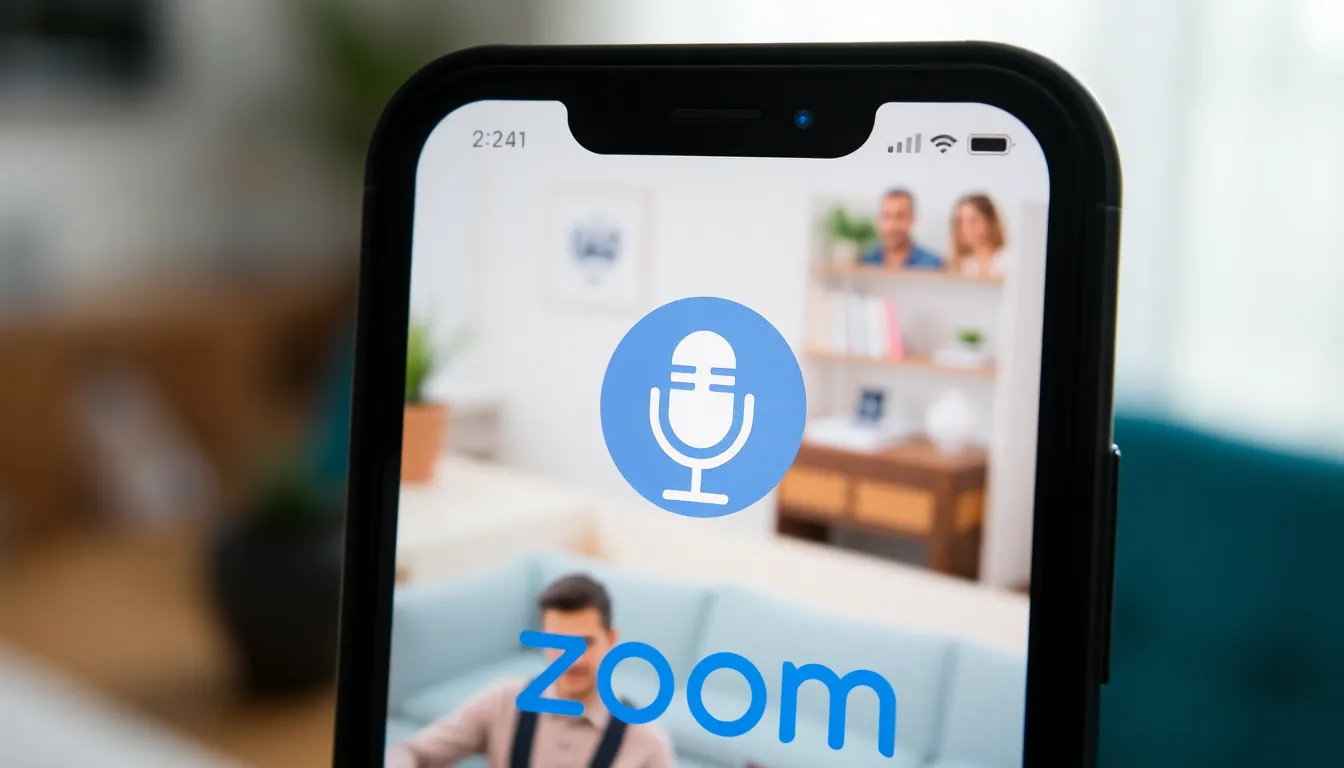Table of Contents
ToggleIn the world of virtual meetings, nothing’s more frustrating than being the only one muted while everyone else is chatting away. Imagine trying to contribute to a lively discussion only to realize you’ve been talking to yourself like a confused mime. If you’ve ever found yourself in this awkward situation on Zoom using your iPhone, you’re not alone.
Understanding Zoom Muting Functions
Grasping the muting functions in Zoom enhances the virtual meeting experience on an iPhone. Recognizing when to mute and unmute can significantly improve communication and engagement.
Importance of Muting and Unmuting
Muting prevents background noise from disrupting meetings. Unmuting allows participants to contribute effectively during discussions. Each person should avoid unintentional interruptions while others speak, fostering a respectful atmosphere. Clear sound improves focus on the agenda. Time savings occur as participants don’t repeat themselves due to misunderstandings. Stating questions or comments clearly without distractions leads to smoother communication.
Different Ways to Mute on Zoom
Users can mute through various methods on Zoom. Tapping the microphone icon on the screen provides a quick toggle between muted and unmuted states. Accessing the meeting controls at the bottom of the interface enables this action easily. Hardware solutions like using headphone mics offer additional options. Adjusting settings in the Zoom application allows customization of mute controls. Remember that the mute function also appears in group chats, helping manage conversations effectively. Emphasizing these methods ensures seamless participation in all meetings.
Steps to Unmute Zoom on iPhone

Unmuting during a meeting on Zoom can significantly enhance communication. The following methods provide clear guidance for users.
Using the Zoom App Interface
Tap the microphone icon prominently displayed on the screen when in a meeting. This button toggles between muted and unmuted states. Observing the confirmation on the screen helps verify the change. The icon turns red when muted, indicating the device’s status. If the microphone is still not functioning, navigating to the participants list allows users to unmute themselves by tapping their name.
Checking Device Settings
Confirm that the iPhone’s microphone settings are correctly configured. Access the device’s settings by opening the Settings app, selecting Privacy, then tapping Microphone. Ensure Zoom is toggled on to allow microphone access. If issues persist, restarting the iPhone could reset the connection, often resolving minor problems. Keeping the operating system updated also helps maintain compatibility with the app’s features.
Troubleshooting Unmute Issues
Resolving unmute problems on Zoom often involves common issues that can disrupt meetings. Users might face challenges with the microphone icon not responding. Check the app permissions. Ensure that Zoom has access to the microphone in the iPhone settings. Users may also encounter sound issues due to hardware problems. If external microphones are used, confirm that they’re properly connected. Testing the microphone with a different app can help identify if the issue lies with Zoom. Issues may also arise from network connectivity problems that can affect audio quality during meetings.
Common Problems and Solutions
Microphone not unmuting can stem from several sources. One frequent problem involves a delay after tapping the microphone icon. Restarting the Zoom app often resolves this issue. Users may also experience muted audio due to background noise suppression settings. Adjusting these settings can enhance sound clarity. If participants still can’t hear, they should check the phone’s volume controls and ensure they aren’t muted at the system level. Frequent disconnections warrant checking Wi-Fi stability. Ensuring a strong connection can significantly improve performance during meetings.
Updating Zoom App
Keeping the Zoom app updated is crucial for performance. Updates often enhance features and fix known bugs. To check for available updates, users can visit the App Store. In the App Store, tapping on their profile icon reveals pending updates. Installing the latest version often resolves glitches related to unmuting. If unmute issues persist, uninstalling and reinstalling the app may provide a clean start. After reinstalling, users should revisit settings to ensure all permissions are correctly configured. Regular updates also ensure compatibility with the latest iOS versions, which can further enhance functionality.
Best Practices for Effective Communication
Maintaining clear communication enhances the virtual meeting environment. Engaging audio management plays a significant role in achieving that clarity.
Tips for Managing Audio During Meetings
Set the audio level before joining the call. Users often miss important points due to low volume or muted settings. Ensure the microphone is closer to the speaker’s mouth for better sound quality. Adjust the phone’s volume and avoid background noise to improve clarity. Mute when not speaking to minimize disruptions. Make sure to periodically check the microphone indicator for active status during discussions. These simple steps foster a smoother flow of conversation and engagement.
Navigating Zoom Settings for Optimal Use
Access the settings by tapping the gear icon in the Zoom app. Many features enhance the audio experience, including ‘Optimize for a low bandwidth’ option. Check the ‘Audio’ section to adjust microphone and speaker settings. Users often overlook the ‘Test Mic’ feature, which allows for sound checks. Ensure notifications are enabled for mic issues during meetings. Regularly update the app for the latest improvements in functionality. These actions maximize user experience and facilitate effective communication.
Mastering the unmute function on Zoom for iPhone is crucial for effective virtual communication. By understanding the app’s features and troubleshooting common issues, users can ensure they contribute meaningfully to discussions. Regularly checking microphone settings and keeping the app updated can prevent many audio problems.
Implementing best practices like muting when not speaking and testing audio beforehand can significantly enhance the meeting experience. With these strategies in place, anyone can participate confidently and avoid the awkwardness of being unheard. Embracing these tips will lead to more engaging and productive virtual meetings.





